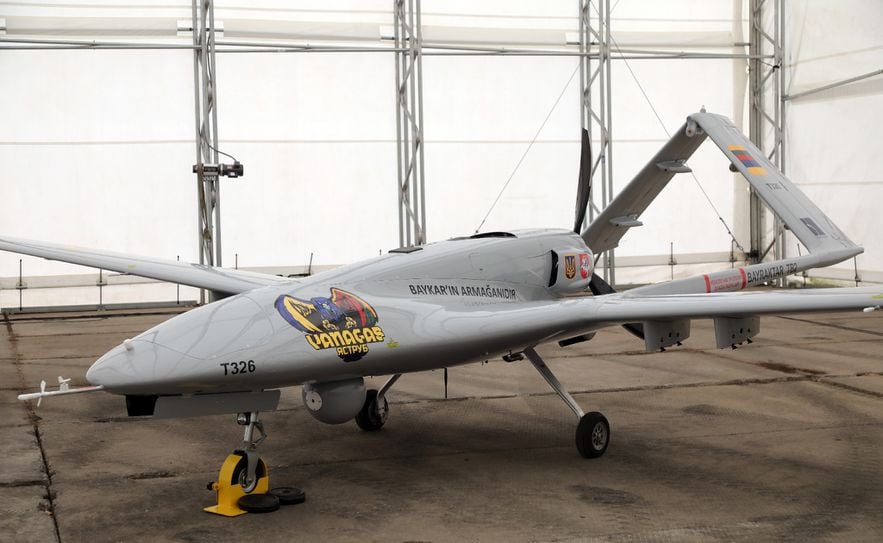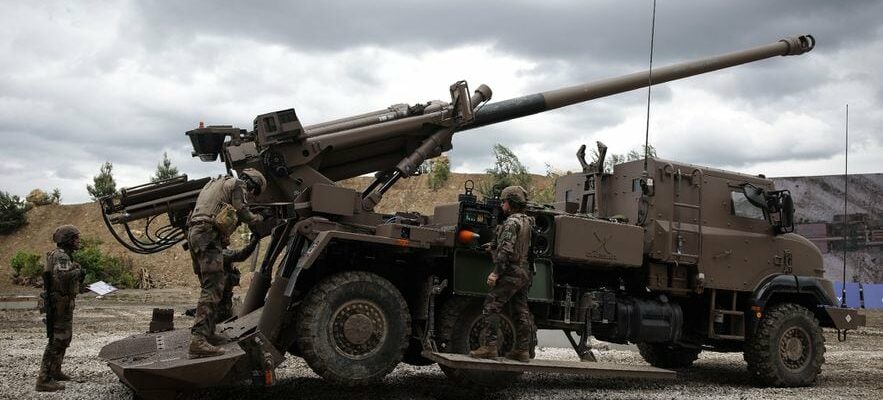Global military spending exceeded $2.443 trillion in 2023, according to the Stockholm-based International Peace Research Institute. A record. A resurgence of interest in the sector is being felt at Eurosatory, the largest international land arms exhibition, which is being held in Villepinte, north of Paris until June 21. Armies from all continents flock there to discover all the equipment developed by the defense industry.
The war in Ukraine reminded many states of the importance of having weapons capable of resisting or deterring an attack. “Europeans have remembered that armaments are an issue of survival in the face of hostile powers,” underlines Léo Péria-Peigné, IFRI researcher, who has just published Geopolitics of armaments (ed. The Blue Rider).
L’Express: How is armament a tool of geopolitics?
Léo Péria-Peigné: It is the basic tool of war, one of the essential components of geopolitics since time immemorial. Being armed or disarmed places a state in a favorable or unfavorable position against another, which may or may not impose its strategic objectives on it. The method of acquisition also matters: producing your own weapons does not mean the same thing as acquiring them from a third state in terms of independence and sovereignty.
With the war in Ukraine, Europeans rediscovered the value of this tool…
Yes, many remembered that armament is an issue of survival in the face of hostile powers. The West has put itself in a position of support for Ukraine by providing it with weapons to resist the Russian invader. But the consumption of equipment and munitions on site far exceeds European, or even Western, production capacity. This has nothing to do with the asymmetrical wars to which, for example, the model of France’s forces corresponded, engaged, in recent decades, in conflicts in Africa against less well-armed groups.
How to choose correctly between quantity and quality?
In a high-intensity conflict, with significant losses, the right ratio is the one that can be sustained over time. It is useless to have 2000 obsolete tanks which will not obtain real results without unsustainable losses, any more than to have twenty tanks which are very efficient but irreplaceable and irreparable in the event of losses.
When it comes to weapons, it’s like poker, the most important thing is not the cards, but what you do with them. The Russian army was able to realize this against the Ukrainians at the start of the invasion. If the enemy is more mobile, the best tank is of little use. Conversely, the AMX 10 RCs given to kyiv by France, light vehicles, poorly armored, but well armed and very mobile were not adapted to the frozen Ukrainian front, plowed with sharp shrapnel for its wheels. It was designed for illumination and reconnaissance in force and proved too fragile to get closer to the Russian enemy.
It is said that the Leclerc tankwhich France did not offer to Ukraine, is one of the best in the world…
Perhaps, but only two other armies have them, in addition to the French army: those of the United Arab Emirates and Jordan. A recurring concern with French armaments is that they are made by and for France, that the French State intervenes a lot in the programs, taking little account of export prospects. The CAESAR gun is an exception in this area, imposed against its will on the Army. This was somewhat the case with the Leclerc tank, especially since it arrived on the market after the end of the Cold War, for which it was designed. The “best tank in the world” therefore arrived on the global market even as demand was rapidly weakening, while costing more than most of its competitors.
French army soldiers install a French Caesar self-propelled howitzer during a demonstration at the Eurosatory international land and air defense and security exhibition, in Villepinte, a northern suburb of Paris, June 16, 2024
© / afp.com/Valentine CHAPUIS
The Leclerc must be replaced at the end of the next decade by the MGCS, which will combine a tank with different connected objects. A Franco-German project, therefore more “geopolitical”?
Yes, because it must meet the needs of the German and French armies, two nations which clashed with tanks in the 20th century. This is the whole difficulty: the French army has been built for thirty years on an expeditionary model, because the mainland territory is protected by nuclear deterrence. She therefore wants a mobile tank, which can be deployed quickly. The Germans want a heavy tank to protect their territory and wage war in Europe. Furthermore, our two industries differ: the French industrial technology and defense base (BITD) develops and produces first for the French army, with its specific doctrine, when the German BITD produces for the market, and develops products likely to be exported. Reconciling both business and work cultures can be difficult.
The French are very critical of European allies buying “off the shelf”. For what benefit though?
The relevant example is the replacement of LRUs, the rocket launchers which the French army has in small quantities and which will be obsolete in the short term. France could develop a sovereign system to replace them, but it will be very expensive and it is already getting started late and plans to buy less than thirty copies. The other choice is an “off the shelf” solution: it will be cheaper, because there will be no development costs and it will be able to acquire more ammunition for the same cost.
The downside is that she would put herself in a situation of dependency. The most important parts of the system would be produced elsewhere. Concerning munitions, the country supplying them could activate rear doors rendering them inoperable, if it considers that they could be used in a non-legitimate conflict. A problem that does not arise when the system is sovereign.

A Turkish-made Bayraktar drone, widely used by Ukrainian forces, at an air base in Lithuania, July 6, 2022
© / afp.com/PETRAS MALUKAS
This is one of the striking examples in the book. How does armament constitute a tool of affirmation for emerging powers like Turkey?
Fifty years ago, after the annexation of part of the island of Cyprus, the United States decreed an arms embargo on Turkey, its NATO ally. The Turks realized their dependence and vulnerability, and embarked on a policy of empowerment of their defense industry. This allowed them to develop equipment different from that sold by the United States, less expensive, such as, recently, its Bayraktar drone. From this own, rather inexpensive offer, Turkey was able to make a diplomatic tool: the Bayraktar was sold in more than twenty countries. The Turkish offer has its advantages but still remains imperfect, particularly in the most advanced segments such as aviation, where the most complex elements such as the engine must be imported.
Why do so many Europeans buy American?
The purchase of weapons establishes political relations between the seller and the buyer. Buying American allows many countries to mark their attachment to NATO and the United States, with the idea that they will help you defend yourself if there is a war. France can do this in certain partnerships, such as with the United Arab Emirates, but on a smaller scale, which could harm it in competition with American industry.
France will begin construction of a new aircraft carrier to replace the Charles-de-Gaulle. Are we sure that it will be a relevant tool in the future?
Let’s say that in a high-intensity conflict, the Navy will think twice about committing a ship that is as powerful as it is difficult to replace or even repair. The aircraft carrier has other uses, but some experts consider that for the same price, France could equip itself with more useful and less vulnerable weapons. But the aircraft carrier also fulfills missions of representation, support and deterrence. And it is a structuring weapon for the French industrial and technological defense base.
What will be the weapons of the future, those that could change the way war is waged?
I think these will be weapons that are accessible enough, like drones, to be deployed by more countries than a small select club of great powers and that give them capabilities they previously couldn’t afford. With the development of underwater drones, states which would never have had the means to acquire modern submarines will be able to have capabilities, albeit limited, but which other powers will have to take into account. This will change the face of armaments, and of the geopolitical balance in general.
.
